Chernobyl VR Project is a virtual experience which allows you to visit the ghost town of Pripyat and the Chernobyl Nuclear Power Plant and learn about their history. […] All in beautifully rendered 3D photogrammetrical scans of the locations and buildings, that are basically digital copies of these places, combined with spherical photography and 360 videos.
From the product description
About the Chernobyl Nuclear Power Plant
When nuclear power plants malfunction, everyone knows it. The news covers it heavily at the time, and for years to come they continue to be referenced. Chernobyl, Three Mile Island, and Fukushima are all synonymous with nuclear disaster. Even though you’ve almost certainly heard of Chernobyl, how much do you actually know about it? Have you ever had a chance to visit it?
Back in 1986, an accident occurred at the Chernobyl Nuclear Power Plant, in the number 4 reactor, near the city of Pripyat in the north area of Ukraine (part of the Soviet Union at the time). Due to an accident during a safety test (oh, the irony), instability in the reactor led to the core melting down and huge amounts of energy being released.
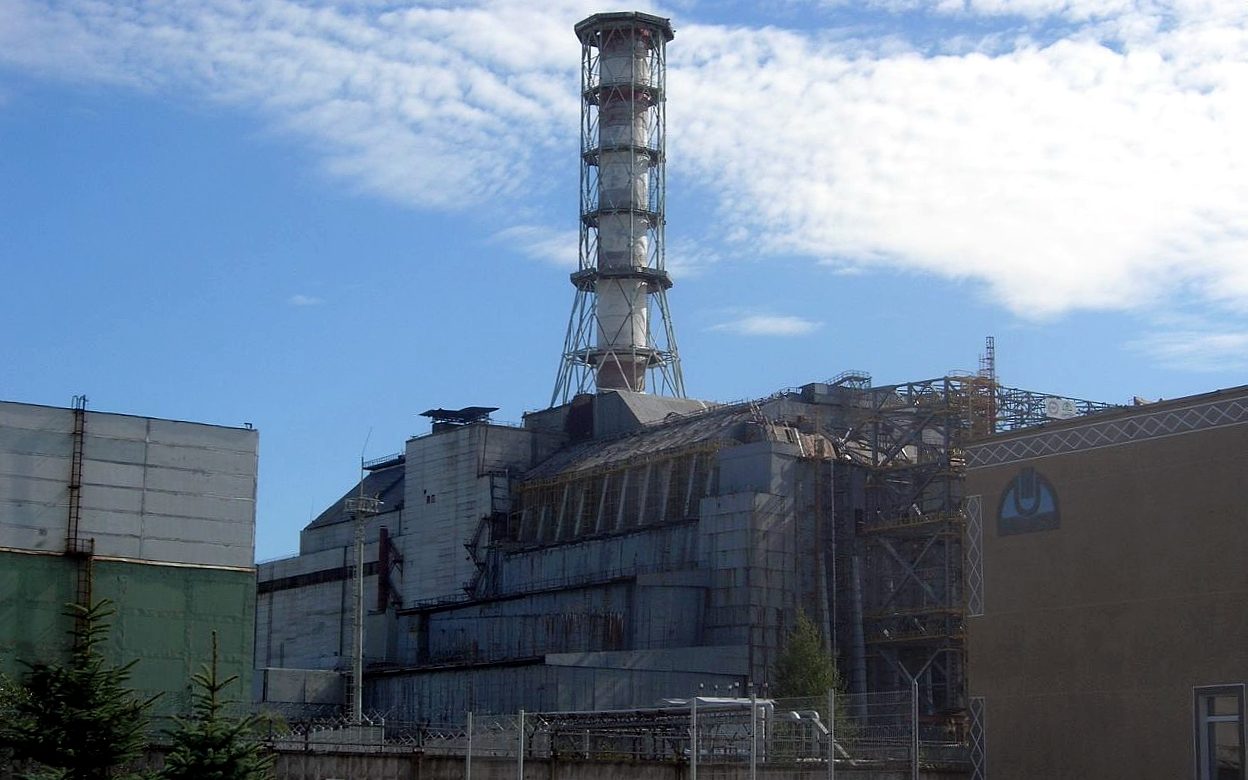
(credit: Carl Montgomery, Chernobylreactor 1, CC BY 2.0)
Visiting the Exclusion Zone containing the abandoned town of Pripyat and seeing the contained Chernobyl reactor is on my bucket list, but I haven’t made my way there yet. Given recent events, it’s not likely to happen anytime soon. I have a fondness for abandoned areas in general, and there are few completely abandoned cities in the world, especially left so relatively abruptly. The apartments are still furnished, posters remain on the wall in the school rooms, and once-expensive equipment languishes in the hospital. Until it’s possible to travel there once more, you can explore it in VR. Read on to learn more about the Chernobyl VR Project app and what it has to offer.
About the Experience
Upon launching the app, you see a settings screen where you can either continue a previous exploration, start a new one, go to settings, view controller bindings, or exit. As you visit locations, it remembers if you’ve already heard the narration so you can revisit areas without hearing the same things again, thus the ability to continue versus starting a new session. In practice though, I encountered the same narrations more than once, so maybe it only applied to certain ones.
There’s no set order of locations to visit. Instead, destinations laid out as tiles surround you within a spherical photo of Pripyat. As you point at the tiles, the narrator speaks the name of the spot. This is fine the first time, but as you look around, it gets a bit tiresome to keep hearing the same words.
Above each of the tiles is an indicator so you know the nature of the location. Those with the eye and the arrow above them indicate 360° photos. With these, you can’t move around since it’s just a single photo. There are usually hotspots within the image to jump to another spot or to hear informative narration.
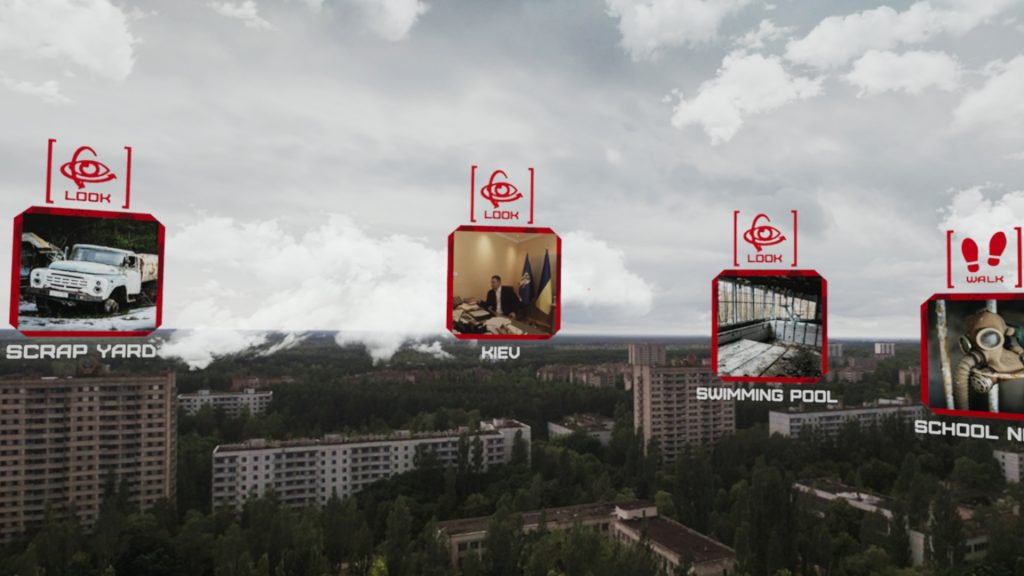
The tiles with the feet above indicate volumetric/photogrammetric captures. Spherical photos can be ok in some cases, but if you want any feeling of immersion, they won’t cut it. You can teleport around the rooms, and in many cases down hallways into other rooms as well.
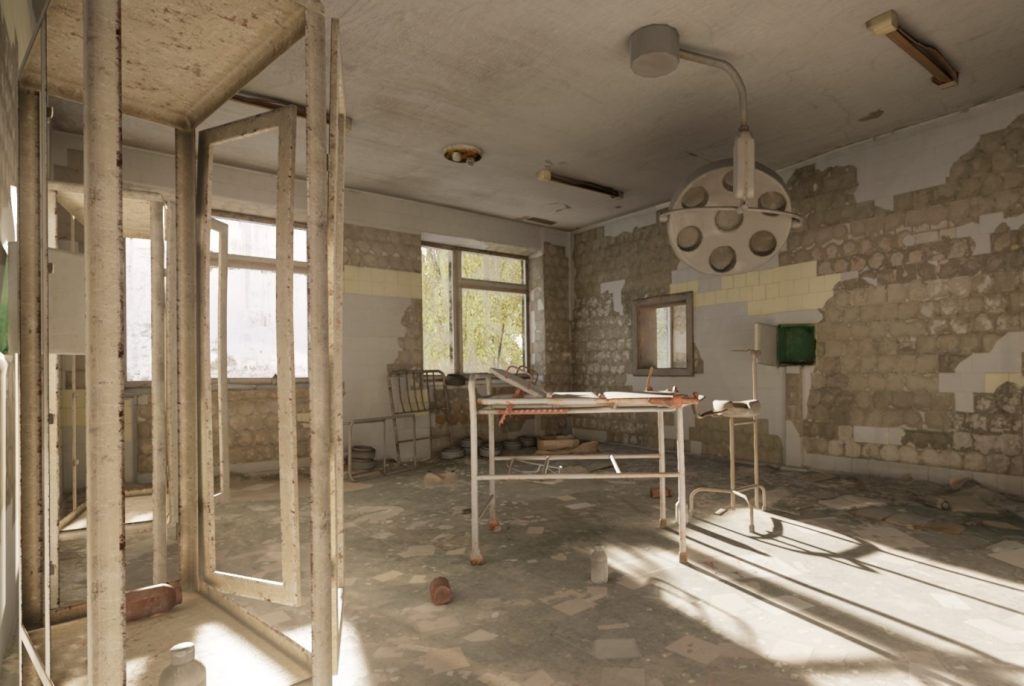
There are a variety of areas to choose from in the region. They include:
| 360° spherical photos | Full 3D environments (photogrammetric) |
|---|---|
| Scrap yard Community Center Amusement Park Swimming Pool Kiev (Interview) Minsk (Interview) Gliwice (Interview) | School #3 Flat Hospital Power Plant Village Duga Radar |
Graphics and Sound
In addition to the narration and general sound of the videos, there are ambient sounds in some of the locations. These are subtle and are a nice touch.
There are three types of visuals: 360° videos, 360° photos, and full 3D photogrammetric environments.
360° Videos
The 360° videos are the lowest quality. I read that they took the videos with a 4k camera. In general, 4k makes for very sharp video. When switching from a flat image to a spherical image though, it’s suddenly nowhere near sharp enough since you now have to capture details in every direction. The quality of the videos is low enough to really reduce their usefulness. It’s also unfortunate that the videos tend to have artifacts from stitching. When you create spherical images, you use a camera with multiple lenses pointing in every direction, then merge them together (“stitching”) using clever software. When done well, it all looks seamless, but these videos have distorted lines highlighting the joins between the images.
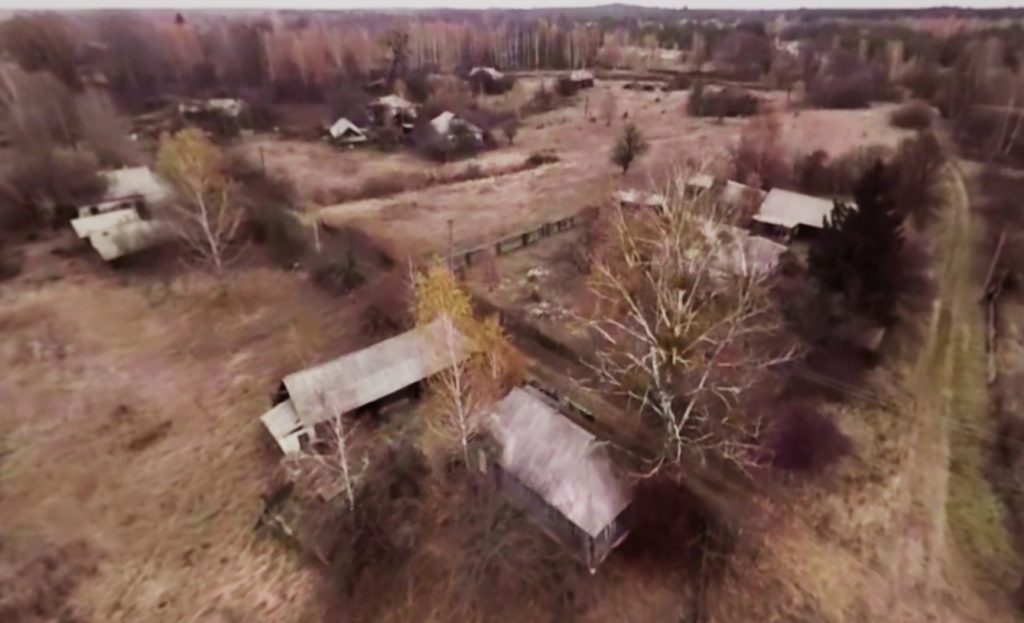
360° Photos
The 360° photos are a little better, but they suffer the same problem all such photos have. Your point of view is from the middle of the photo sphere. You can turn your head in any direction, but you can’t move at all without potentially upsetting your stomach. Worse, the scale is almost never correct. In the videos, it’s a little better since you’re high up in the air. Interior spherical photos almost always result in you feeling like either a giant or an ant. The simple truth is that it’s much cheaper to produce spherical content than taking the hundreds or even thousands of photos for photogrammetry in addition to all of the post-processing.
Full 3D Environments
Thankfully, several of the locations are a combination of photogrammetric imagery and 3d reconstructions. For example, the school classrooms might be photogrammetric, but the desks and tables might be 3d objects inserted within the scene. When done well, the objects blend together well. I think they did a good job in this area.
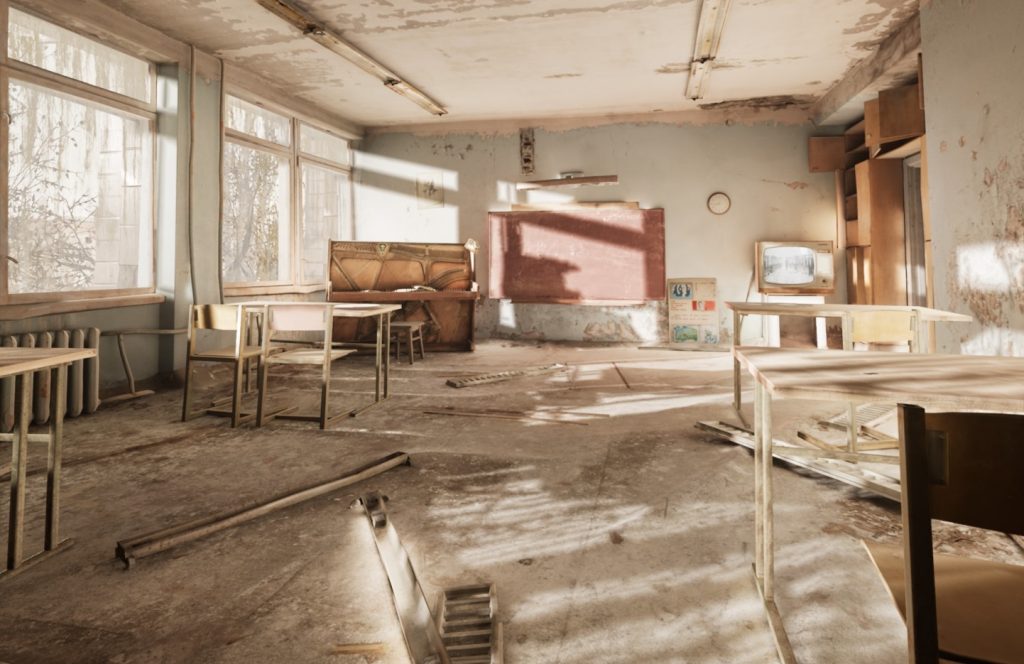
Some areas, like the radar antenna array, seem to be completely reconstructed digitally. This was almost certainly necessary due to the dilapidated condition of it today. The work here is excellent and the texture on the metal looks just right.
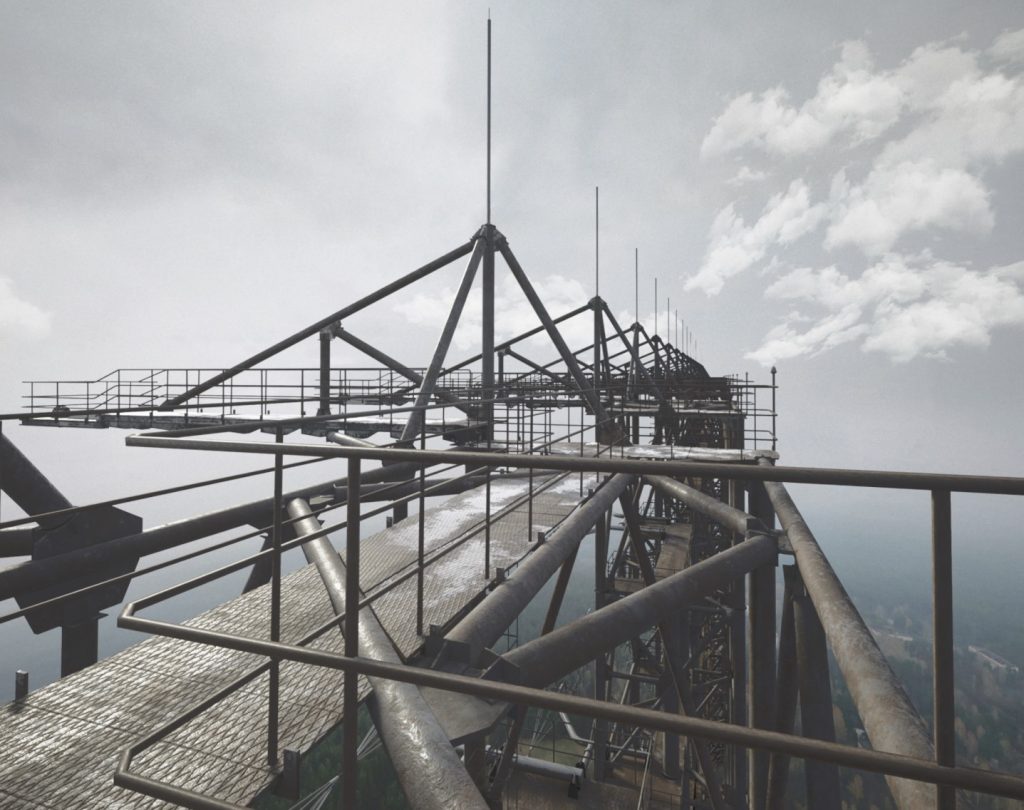
Information Content
Narration abounds. Each location has general information, plus additional areas to visit for more detail. The narrator speaks in accented English. The accent is a little strong in a few places, but always understandable.
Each area has introductory content heard as you travel to the chosen spot. This takes place as a drone flight (you can look up and see it flying!) taking you to your destination. You can cut this short if you want to arrive quicker, or you can listen through it. Once there, you can often activate additional areas to see related scenes with their own content. Some of the related content is simply audio (designated with a speaker icon), while other content is either 360 images/videos or fully 3d environments.
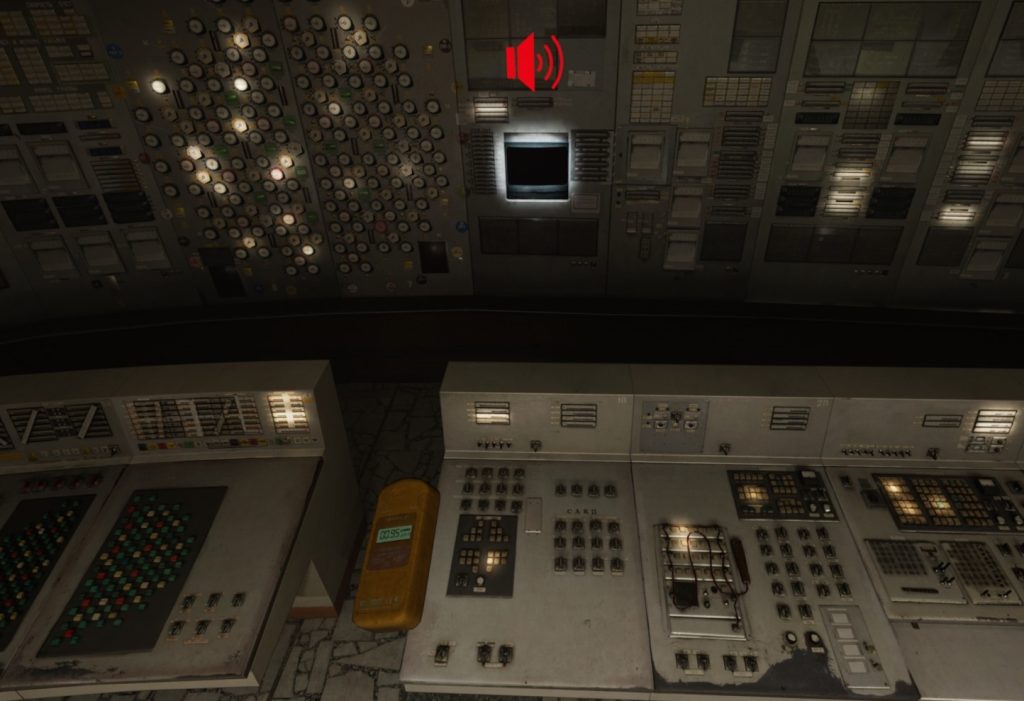
The videos often have survivors or guides from the region providing context, usually as an interview. These are in Russian or Ukranian (sorry, I don’t know which) then translated into English. The content is of varying lengths, and sometimes seems to stop abruptly.
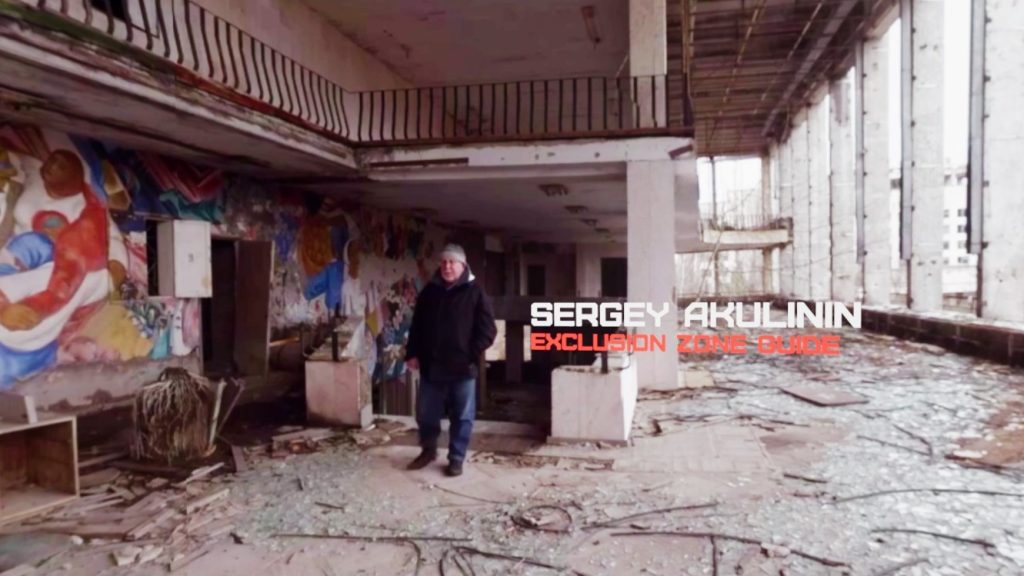
Interactivity
Other than activating the information hot spots, there isn’t much interactivity. You carry around a Geiger counter to measure ambient radiation levels, and usually an increased level indicates additional information to learn. You can silence the beeping if you like (it gets to be a bit much after a while), and you can read the number, but that’s about it.
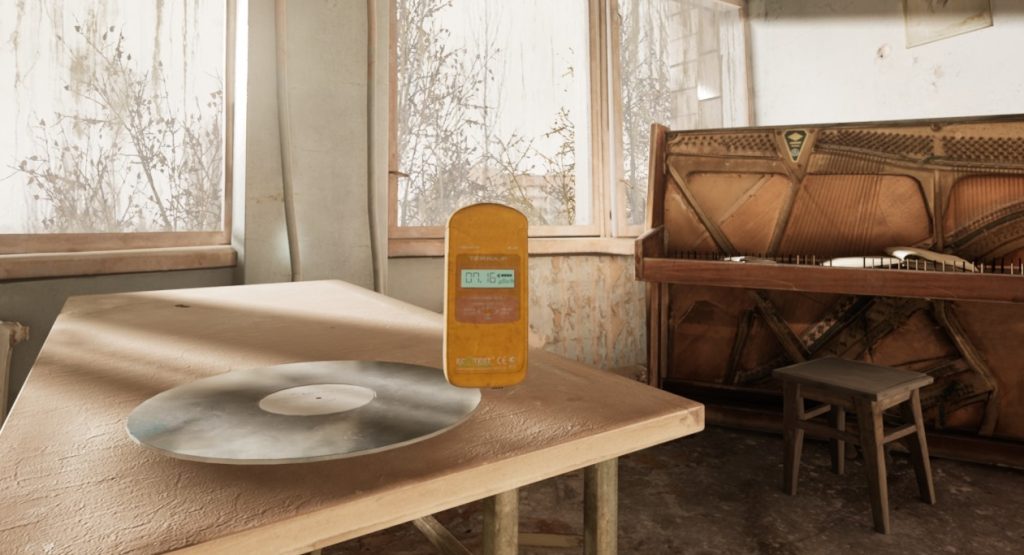
I’m not sure what else could have been interactive. Sometimes it can be fun to pick up random items and throw them (see Buzludzha), but it’s not a necessary feature.
A possibility might have been to have some sort of simulation to recreate and possibly avert the original disaster. This would have clearly been more effort but would have really added to the educational value and I think would also make the title more popular.
Future Potential
Thie developers originally released this title in “early access” status, meaning that it was unfinished, but they wanted to be able to start getting feedback. It sounds like they made some pretty big improvements during this time until considering it complete. They considered it final a few years ago. I would like to see subtitles and more of the scenes be fully 3d. Perhaps even more though, I’d really like to see improved videos, but I don’t expect this will happen.
Summary
Pros
- Great depth of information including narration and videos
- Assortment of sites around Pripyat and Chernobyl
- Well-done photogrammetric locations
Cons
- Low quality of 360° videos and photos
- Narration sometimes cuts off abruptly
Overall, this is a good title. I would say to get it on sale if possible since it’s a bit rough around the edges given its price. On the other hand, this is content that takes some effort to produce. It’s an area that is officially considered off-limits to most people, and any urban exploring is fairly dangerous considering the condition of the buildings. I’m not aware of any other VR experiences covering the area, though there are many 2D YouTube videos that are good. If you have an interest in exploring abandoned areas, especially an area with the history of Chernobyl and Pripyat, this is an experience you probably won’t want to miss. Any other thoughts? Sound off in the comments!



